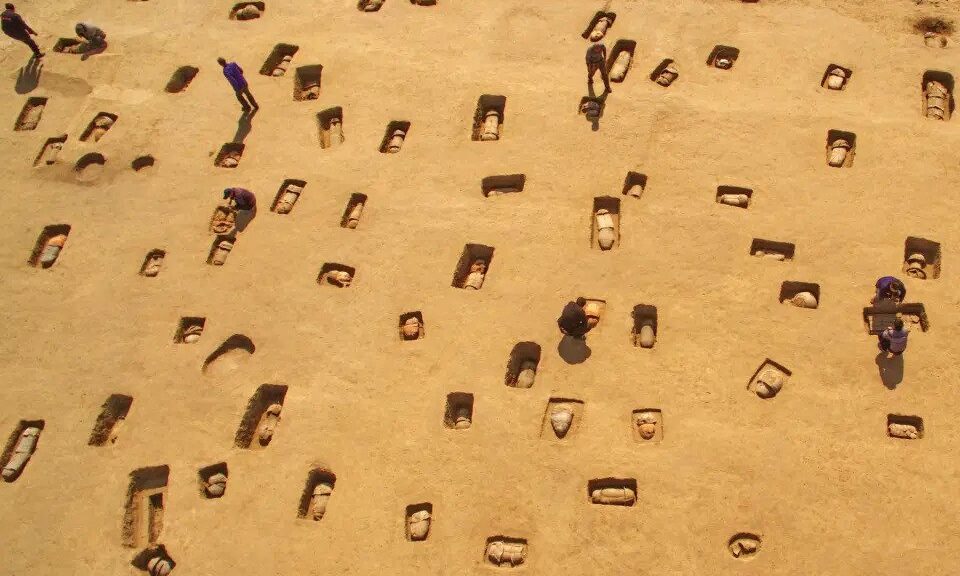Haunting pictures show a mass grave of 113 ancient human remains buried in clay pots in China
These haunting images show a mass grave of 113 ancient human remains buried in household clay pots. Archaeologists have discovered a group of 2,000-year-old tombs using a unique ancient burial method in central China.
A total of 113 human remains have been found and each of them was wrapped with two to three clay containers, reported the People’s Daily Online.
Chinese historians said the finding of the large-scale tomb site was significant in helping them understand the burial customs of the Western Han Dynasty (202BC-8).

The group tombs are located in Huanghua City, northern China’s Hebei province, which was thought to be the site of an ancient city called Fudi.
Archaeologists discovered six tombs. The excavation efforts afterwards revealed that the site contained more than 100 chambers.
So far, experts have located 113 tombs.
All the remains were buried using a method called ‘urn burial’, which means the corpses were wrapped using two to three large clay containers, such as urns, pots and bowls.
A small hole would be drilled at a side of the clay coating. It’s believed that this was to let the soul of the deceased come and go freely.
It was previously thought that ‘urn burial’ was only used on children. However, on this newly discovered site, six tombs were of adults while 107 belonged to children.
Zhang Baogang, the head of the Huanghua Museum, told a reporter from China’s Xinhua News Agency: ‘Due to river digging and the destruction of nature in the past 2,000 years, we have only managed to excavate part of the tomb site.
‘We have discovered remains some 150 metres (492 miles) south of the site, which means the number of adults having been buried in urns could be much higher.’
This was the first time Chinese archaeologists had found ‘urn burial’ being used on adults, Zhang said during an earlier interview.
Zhang said that the tombs were thought to belong to civilians. As a result, the discovery was significant in helping them understand the burial customs of people living in Fudi, a fortress city built during the Western Han Dynasty (202BC-8)


